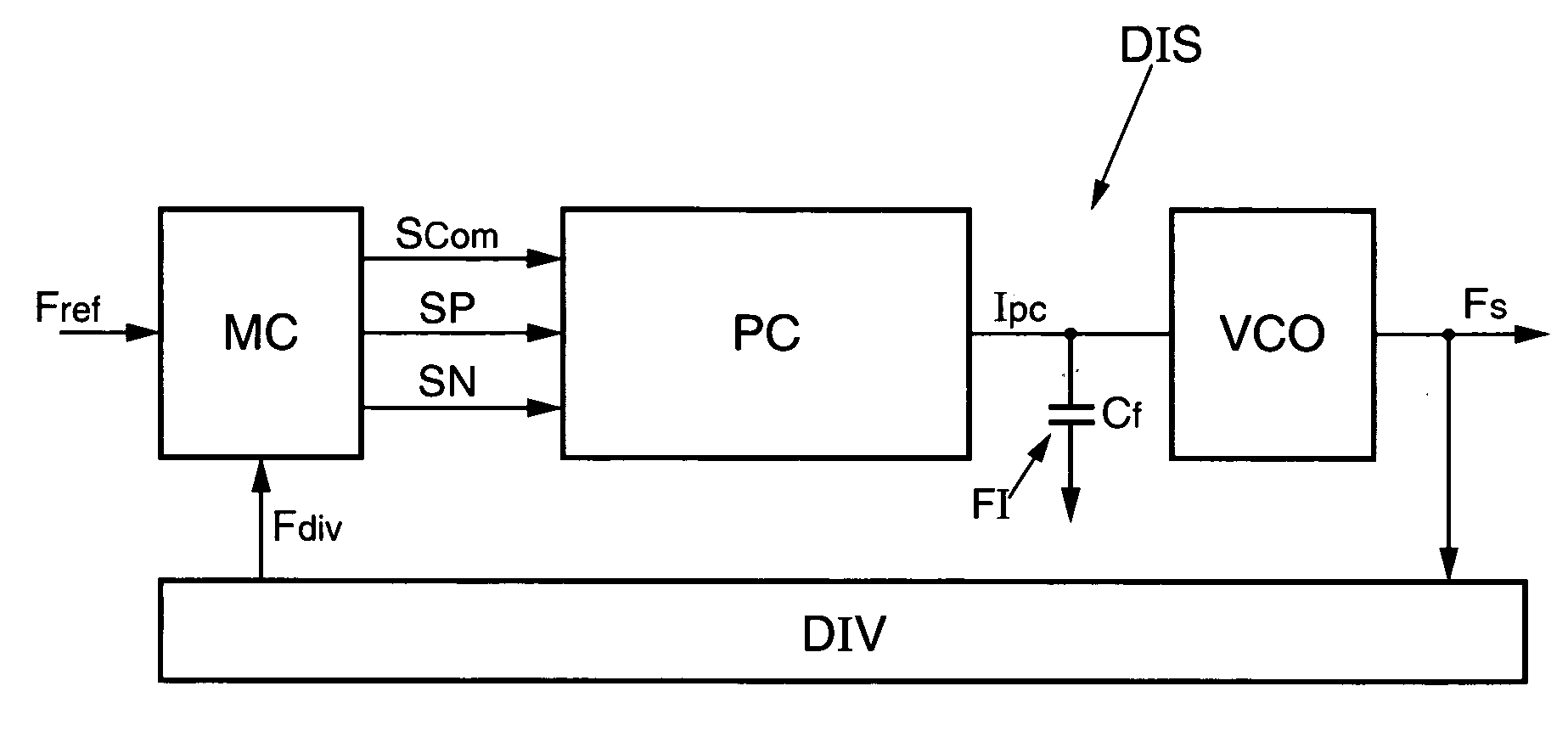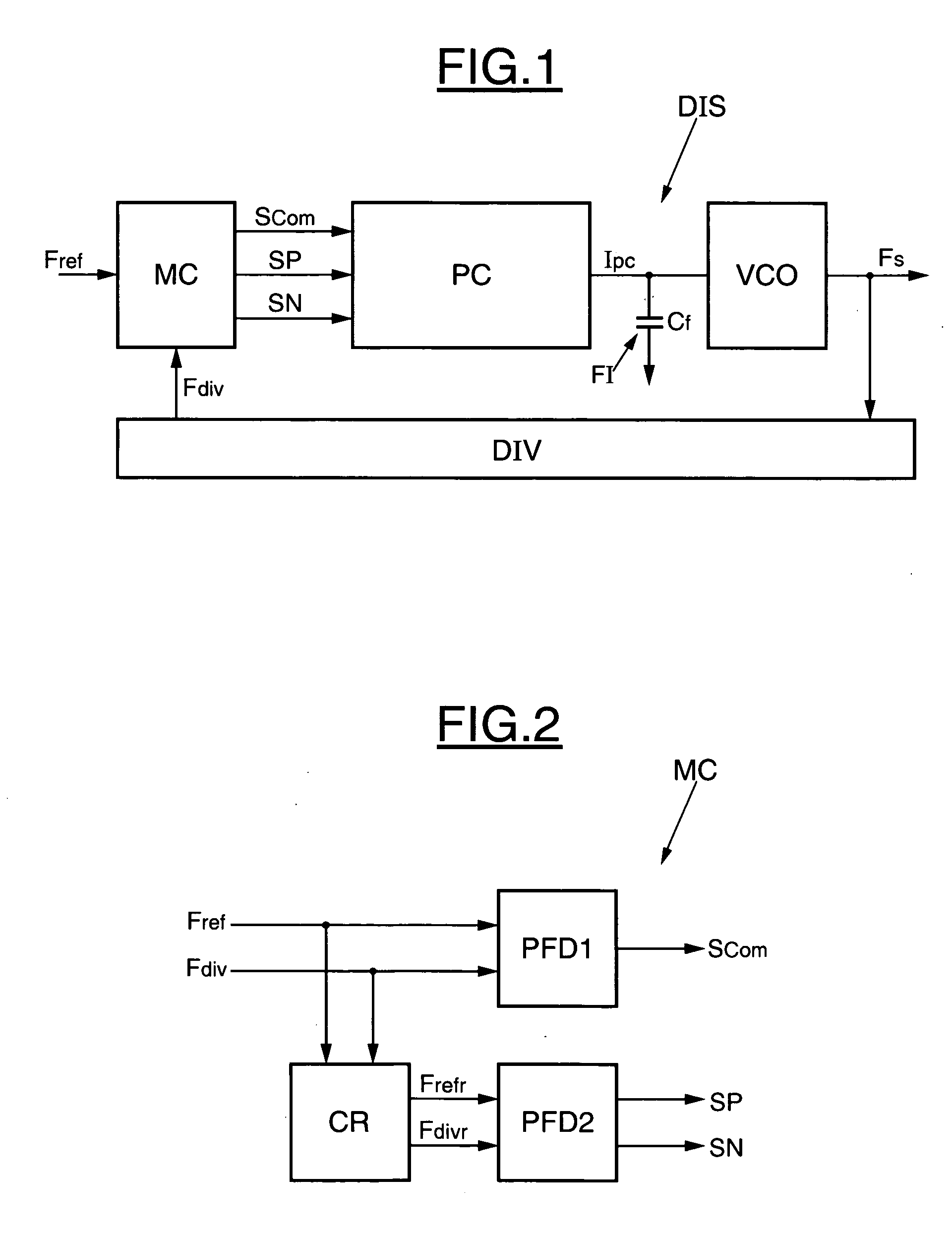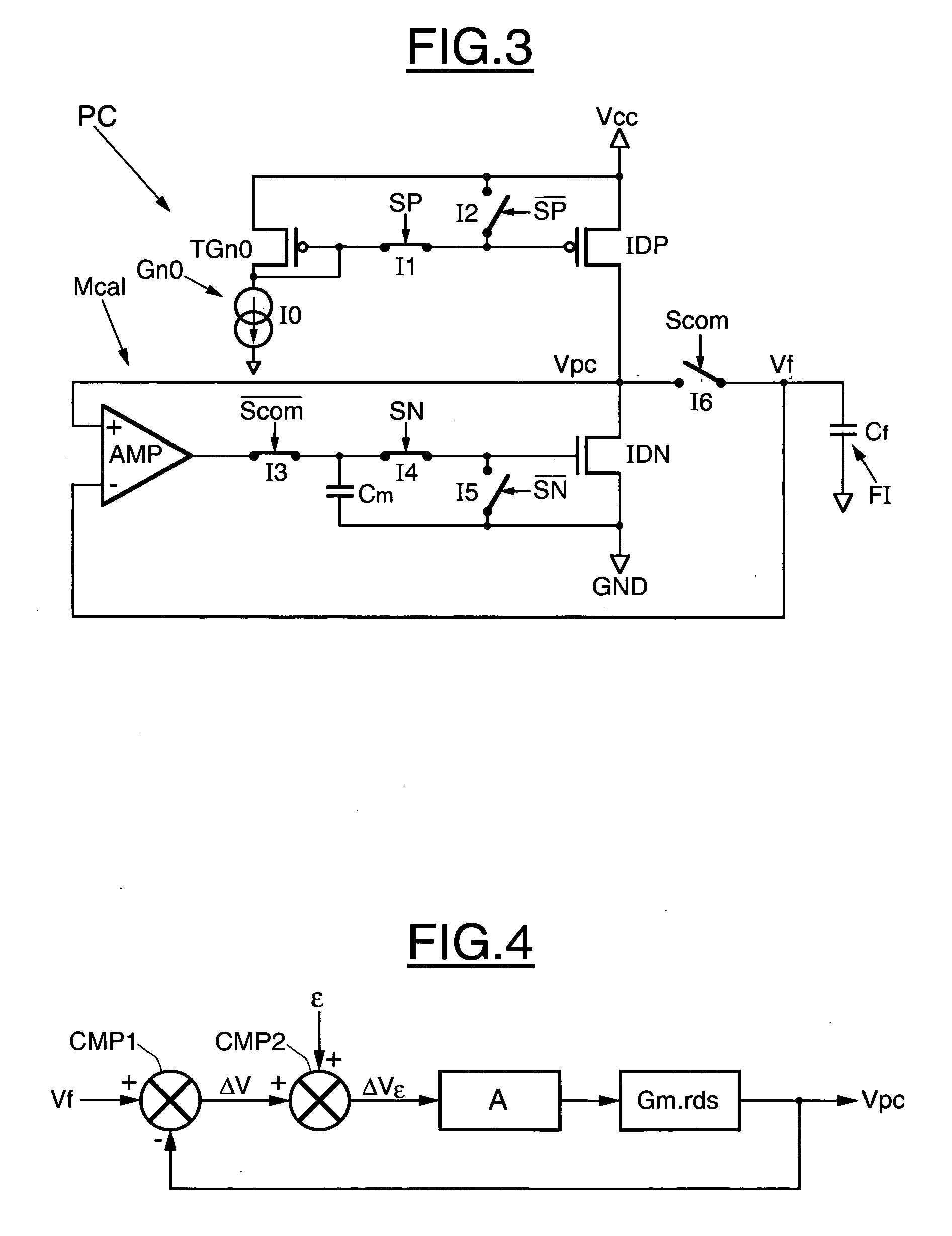Method of correcting the phase difference between two input signals of a phase-locked loop and associated device
a phase-locked loop and input signal technology, applied in the direction of pulse automatic control, electric devices, etc., can solve the problem of spurious noise generated by current differences, and achieve the effect of limiting spurious noise and improving phase difference correction
- Summary
- Abstract
- Description
- Claims
- Application Information
AI Technical Summary
Benefits of technology
Problems solved by technology
Method used
Image
Examples
Embodiment Construction
[0040]FIG. 1 illustrates an exemplary embodiment of a device DIS for correcting the phase difference between two input signals of a phase-locked loop according to the invention. The device DIS comprises a controller or control means MC receiving a reference frequency Fref at its input. The reference frequency Fref can, for example, be generated by a quartz oscillator or else by another phase-locked loop connected upstream of the device DIS. For digital television applications, Fref can be around 2.7 MHz, for example.
[0041] The controller or control means MC generates three signals at its output, an activation signal which in this example is a switching signal Scom, a signal called ‘positive signal’ SP, and a signal called ‘negative signal’ SN. An inverter (not shown) produces from the signal Scom a deactivation signal {overscore (Scom)}, which is the complementary signal to the signal Scom.
[0042] The three signals Scom, SP, and SN are delivered to a charge pump PC connected to the...
PUM
 Login to View More
Login to View More Abstract
Description
Claims
Application Information
 Login to View More
Login to View More - R&D
- Intellectual Property
- Life Sciences
- Materials
- Tech Scout
- Unparalleled Data Quality
- Higher Quality Content
- 60% Fewer Hallucinations
Browse by: Latest US Patents, China's latest patents, Technical Efficacy Thesaurus, Application Domain, Technology Topic, Popular Technical Reports.
© 2025 PatSnap. All rights reserved.Legal|Privacy policy|Modern Slavery Act Transparency Statement|Sitemap|About US| Contact US: help@patsnap.com



